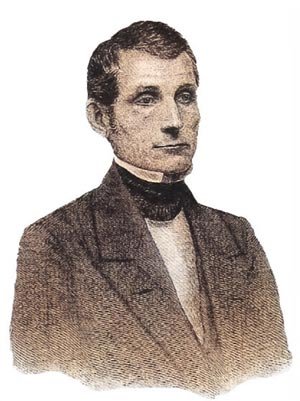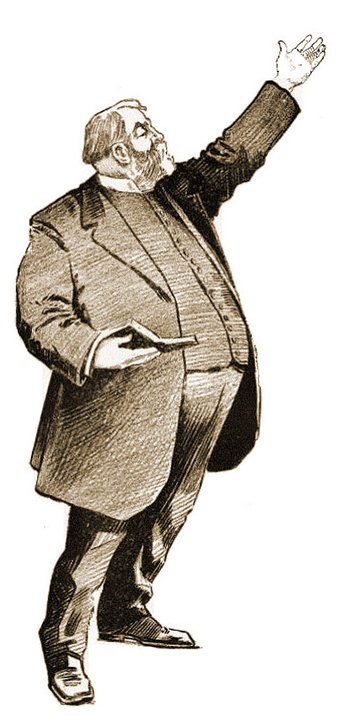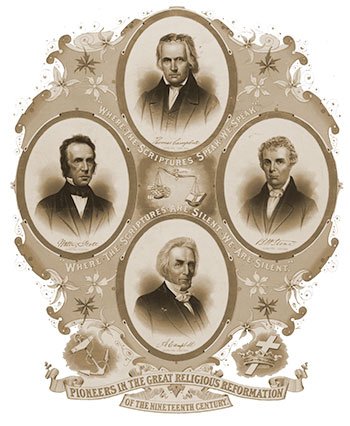1857 The Fourth Great Awakening

Jeremiah Lanphier
A Global Spiritual Phenomenon
The Prayer Revival, which began with a quiet gathering of businessmen in 1857, was the catalyst for the Fourth Great Awakening (Usually called the Third Great Awakening as many historians consider the period preceding this revival, dominated by the ministry of Charles Finney as part of the 2nd Great Awakening, whereas we follow the lead of J. Edwin Orr who saw it as a seperate event). This was not a localized American event; it was a global spiritual tidal wave.
Propelled by new technologies like the telegraph and the increased movement of people, its influence rapidly crossed oceans, igniting and intensifying religious revivals from the towns of Ulster to the plains of South Africa. It was characterized by lay leadership, interdenominational cooperation, and an unwavering focus on prayer.
The North American Epicenter
Jeremiah Lanphier and the Fulton Street Revival
The story of this worldwide revival begins with a layman, Jeremiah Calvin Lanphier. A businessman with no theological training, Lanphier was hired as a lay missionary by the North Dutch Reformed Church in lower Manhattan. Distressed by the city’s spiritual apathy, he decided to start a noon prayer meeting for businessmen.
- The Humble Beginning: On September 23, 1857, Lanphier opened the doors for the first meeting. For the first thirty minutes, he sat and prayed alone. Finally, five other men joined him.
- The Format: The meetings were simple and structured for busy workers. A “five-minute rule” was established for prayers and exhortations to ensure many could participate. The focus was on earnest prayer, often for the conversion of family and colleagues, interspersed with hymns and testimonies. It was notably free of the emotional excesses of some earlier revivals.
- The Financial Crash: Weeks later, the Panic of 1857 devastated the American economy. The ensuing desperation drove thousands to the prayer meetings. What began as a weekly gathering of six men soon became a daily event attended by thousands across New York City. The press, particularly the New York Herald, began covering the phenomenon, and soon, “Noon-Day Prayer Meeting” signs appeared in businesses across the nation.
The Canadian Revival (1857-1858)
The revival fire quickly spread north. The American Methodist evangelists Walter and Phoebe Palmer held a series of highly successful meetings in Hamilton, Ontario, in the fall of 1857. Their work, combined with news of the American prayer meetings, sparked a significant awakening. The mayor of Hamilton and other prominent citizens were converted, and the revival spread through the Methodist and other evangelical churches in Canada West (now Ontario).
While Lanphier’s meeting was the seed, a distinct awakening erupted almost simultaneously in Hamilton, Canada West, under the formidable American Methodist evangelist, Phoebe Palmer. In October 1857, Palmer and her husband Walter were unexpectedly delayed in Hamilton. Local Methodist leaders invited them to speak, and the response was immediate. Twenty-one people professed conversion at the first meeting, and within ten days, over 400 conversions were reported.
The revival swept through the city’s four Methodist churches, with attendance swelling to 6,000 people and a total of 500 to 600 conversions, including the mayor of Hamilton.
The Hamilton revival was driven by Palmer’s dynamic preaching and her distinct Holiness theology. She preached a message of “entire sanctification”—a second work of grace that empowered believers for holy living.
Her key contribution was her “shorter way” to holiness, an accessible, three-step “altar theology”: 1) total consecration to God; 2) exercising faith that God accepts the sacrifice; and 3) publicly testifying to the experience.
This simple formula resonated powerfully with laypeople. Palmer’s ministry was also revolutionary for women. She was a powerful preacher who provided a robust theological defense for female ministry, inspiring a generation of women, including Catherine Booth, co-founder of the Salvation Army.
The Revival Crosses the Atlantic: Europe
Ireland: The Ulster Revival (1859)
News of the American revival, carried by newspapers and sailors, ignited a particularly powerful movement in Ulster.
- Leaders and Origins: It began, much like in New York, with a small group of laymen. In 1857, four young men—James McQuilkan, John Wallace, Robert Carlisle, and Jeremiah Meneely—began meeting for prayer in a schoolhouse in the village of Kells, County Antrim. Inspired by the American events, their prayer meetings grew.
- The Outbreak: By the spring of 1859, the movement exploded. Open-air meetings drew massive crowds, sometimes numbering over 20,000 people. The revival was marked by intense conviction of sin and dramatic conversions. It was a largely Presbyterian phenomenon but crossed denominational lines.
- Impact: The revival is credited with producing over 100,000 converts and fundamentally altering the religious and cultural landscape of Northern Ireland, entrenching a conservative evangelicalism that persists to this day. Prominent evangelists like Henry Grattan Guinness and Brownlow North became key figures as the movement spread.
Scandinavia (1860s)
- Sweden: The revival, known as Nyevangelismen (the New Evangelism), was led by figures like Carl Olof Rosenius and later Paul Peter Waldenström. It emphasized personal conversion and piety, often through small “conventicle” prayer groups that operated alongside the state Lutheran church. The influence of American evangelist D.L. Moody was significant, leading to the formation of the Swedish Mission Covenant Church in 1878.
- Norway and Denmark: Similar lay-led pietist movements gained strength. In Denmark, two main branches emerged: the intellectual and culturally focused Grundtvigianism, inspired by N.F.S. Grundtvig, and the more evangelistic Home Mission (Indre Mission), organized by clergyman Vilhelm Beck.
Continental Europe (1860s-1870s)
Switzerland, France, Netherlands, Germany
- The impact in these nations was more complex. In Switzerland, the period was defined by a political struggle for religious freedom. In France, the religious climate was a battle between post-revolutionary secularism and a defensive, pope-focused Catholicism (ultramontanism). While not a revival in the American sense, a new religious urgency was present.
- The Netherlands had its own Réveil (Awakening) movement, led by figures like Isaac Da Costa, which reacted against theological liberalism and was bolstered by the international revival spirit.
- Germany’s Erweckungsbewegung (Awakening Movement) was a similar pietistic revival against Enlightenment rationalism.
Global Reach: Southern Hemisphere and Asia
Australia (1860s-1870s)
Though often seen as a secular nation, Australia experienced several localized revivals linked to the global awakening. Methodist evangelists, such as the American William “California” Taylor, held successful missions in the 1860s, establishing the pattern of evangelistic campaigns that would become a feature of Australian religious life.
South Africa (1860s)
The revival had a profound impact here, largely through the ministry of Andrew Murray, a key leader in the Dutch Reformed Church.
- The Worcester Revival
In 1860, while Murray was ministering in Worcester, a spontaneous revival broke out during a prayer meeting, mirroring the events in America and Ulster. People began crying out for mercy simultaneously. Initially cautious of the emotionalism, Murray soon recognized it as a genuine move of God and became its champion. The revival spread throughout the Cape Colony, leading to a renewed spiritual life in the church and inspiring many, including fifty young men from Murray’s congregation alone, to enter the ministry.
India (1870s-1880s)
The revivals in the West directly inspired Christian leaders in India. An Indian Anglican led a pentecostal-style revival in southern India in the 1860s. During the 1870s and 1880s, Protestant churches, particularly in the south and in the Punjab region, saw significant growth, especially among the Dalit (“untouchable”) population.
Key Impacts of the Worldwide Revival
- Primacy of Lay Leadership: This was a movement from the ground up. It was started and sustained by ordinary people—businessmen, young men, and women—who took spiritual initiative.
- The Power of Prayer: The revival placed prayer, rather than preaching, at its center. The noon prayer meeting became its most recognizable and replicated feature across the globe.
- Interdenominational Cooperation: The focus on shared prayer and the core message of salvation broke down many denominational barriers, fostering a sense of unity among evangelical Protestants.
- Global Communication: It was the first revival to be reported globally in near real-time, thanks to the telegraph, steamships, and a burgeoning international press. This created a sense of a single, worldwide work of God.
- Spurred Global Missions and Evangelism: The spiritual fervor created a new generation of evangelists like D.L. Moody and gave massive impetus to the 19th-century foreign missionary movement, sending thousands of workers from Europe and North America across the globe.
- Social and Moral Reform: The revival’s emphasis on personal holiness translated into public action. It fuelled the growth of organizations dedicated to social welfare, such as the YMCA and The Salvation Army (founded in 1865 by William and Catherine Booth, who were products of this revival era), and gave strength to social causes like the temperance and abolitionist movements.
Notable Characteristics of The Fourth Great Awakening
The 1859 Revival was characterized by several key features:
Prayer: Fervent, united prayer was the driving force behind the movement. Prayer meetings were spontaneous, lay-led, and often interdenominational, breaking down barriers between different Christian groups.
Conviction of Sin: A profound sense of sin and need for repentance swept over individuals and communities.
Public Confessions: People openly confessed their sins and sought forgiveness, both privately and publicly.
Emotional Intensity: Meetings were often charged with emotion, with participants experiencing intense joy, sorrow, and spiritual ecstasy.
Spontaneous Preaching and Testimony: Lay people, including women and young people, were empowered to share their faith and testimonies.
Transatlantic Reach: The revival’s flames soon leaped across the Atlantic, taking root in Ulster, Ireland, in 1859. From there, it spread rapidly throughout the United Kingdom, igniting revivals in Scotland, Wales, and England. Large gatherings filled churches and public halls, with reports of dramatic conversions and changed lives.
Global Impact: The 1859 Revival was not confined to North America and the UK. It extended its reach to continental Europe, Scandinavia, Australia, South Africa, and India, carried by missionaries and ignited by local prayer movements.
For further research:
The Fourth Great Awakening (which most call the 3rd)
Revival Born In A Prayer Meeting
Jeremiah Lanphier



